Introduction
(By Angelo Ansalone – President of the Bride of Zion Association – Associazione Sposa di Sion)
As I approach this event, I feel the need to “put off my shoes” because I know that I am about to walk upon “holy ground”.
I am one of the founders of the Association Sposa di Sion (Bride of Zion), and I come from a background of faith far from the traditional devotion to Mary. To be clear, I used to think that reciting the rosary was just for funerals, and that the other typical expressions of Marian devotion were just relics from the Church’s past.
Ever since I was a boy I was fascinated by the profound nature of Biblical tales, and so I dedicated myself with passion to the study of the Word of God, which is present and alive in the Judeo-Christian Scriptures.
I continued these studies diligently, first at the school of the Missione Operaia Santi Pietro e Paolo - the Workers Mission of Saints Peter and Paul - which had been founded by the Dominican Father J. Loew (he was one of the first worker-priests - a dock worker and evangelist in the shipyards of Marseilles in the 1940s), and later in Milan at the school of Cardinal C. M. Martini. All these experiences vaccinated me against fideistic and superstitious attitudes.
I would have been, and still I am, happy to subscribe to what Don Angelo Casati, Parish Priest emeritus of St John in Lateran in Milan, stated in his booklet entitled Bread is for Everybody, published in the Germogli series of books:
“In this ecclesiastical period in which we see the rebirth of religious forms tinged with superstition and idolatry, and marked by a desire for prodigious signs, the Word of God with its brilliance takes us beyond the shoals of this weak approach to faith. Ours is not a religion of visionaries, but a religion of men and women listening to the Word: Blessed are those who have not seen, and have believed”.
In the Word of God, the Mother of Jesus is the icon of Israel and of the nascent Church, and her face is contemplated in the background and in continuity with the other “Mothers of Israel” (Sarah, Rebecca, Rachel and Leah) and protagonists of the First Alliance: Mirjam, Deborah, Jael, Anne, the mother of the seven brothers in 2 Maccabees 7, the beloved of the Song of Songs and so on.
However, even the New Testament presents Miriam of Nazareth as a personification of “bat Zion”, the “daughter of Zion”, the recipient of important messianic prophecies.
Therefore, Mary of Nazareth, the “daughter of Israel”, “the Mother of the Mother Church of Jerusalem”, is not “only” the Mother of the Messiah – as if her task ended with this event –she is also Messiah’s principal partner in God’s plan for salvation.
This role explains Mary’s constant presence in the history of the Church, in perfect harmony with the action of the Holy Spirit, which continues to blow and push the Church in the direction indicated by Jesus. This is the meaning of the message of 2 February 2007:
“I come to you on the wings of the Holy Spirit, and I bring you my son Jesus’ smile.” Mary is an expression of the action of the Holy Spirit in the time of the Church, “a ray of his light sent into this world to light and cause to shine the Word of Jesus” (Message of 3 March 2007).
This preface is meant to be a cordial invitation mostly to “committed” priests and members of the laity not to stop at the subtitle of this book, The Apparitions and Messages of Mary, the Bride of the Family, and then have it burnt in their city’s incinerator in the name of a modern, rational faith based on a historical-critical approach to the Holy Scriptures.
It is known that a certain skepticism, which is widespread in all levels of the church, tends to question and even mock the meaning and value of any and all supernatural experiences, including those formally recognized by the Church.
Paradoxically, this criticism is quite often made in the name of the Word of God, when, in fact, the Holy Scriptures themselves prove the permanent significance of these experiences.
Indeed, the pages of the Old and New Testaments are chockfull of stories of supernatural events: omens in the natural world, appearances of angels, revelations, instances of demonic presences, prophetic visions, “spirit” journeys, otherworldly manifestations, revelatory dreams and so on.
A rationalistic and materialistic vision of faith would like to cancel all of this by means of a systematic “demythologizing” of the holy history, which, in practice, means the complete elimination of anything supernatural about God’s Revelation.
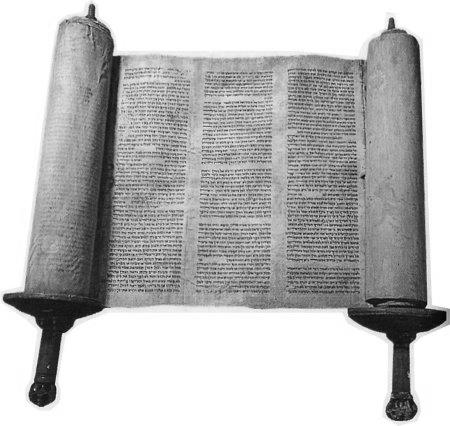
Scroll of the Holy Scriptures
In his book on Jesus of Nazareth, Pope Benedict XVI, after dealing with the indisputable value and also the limits of the historical-critical method of biblical exegesis, and while speaking of the harm this method can cause, adds that:
“The worst books which destroy the figure of Jesus and demolish faith, are those which are interwoven with the alleged results of exegesis. Today the Bible is subjected by many to the so-called modern vision of the world, whose fundamental dogma is that God cannot act in history, and that therefore everything that regards God must be considered subjective.
So, the Bible no longer talks about God, the living God, but become a mere projection of our own thought, we decide what God can do, what we want to do, and what we must do.”
(Pope Benedict XVI, Joseph Ratzinger, 2019, The Crown Publishing Group).
The result of all this is a profound spiritual vacuum, in which it is no longer clear whether, and why, we should continue to believe in the real presence of Christ in the Eucharist, or whether we should demythologize even the Eucharist in the name of a Church in which ordained ministers could become just simple functionaries and administrators of the Church.
Therefore, deciding on the right attitude towards these experiences is critical, especially for the pastors who carry the weight and responsibility of their communities.
This biased skepticism also derives from the increase in false manifestations and supernatural messages. An example of this trend is the incredible proliferation of the so-called “inner voices”, whose tone and contents are perplexing.
Cardinal Martini rightly points out that many of these inner voices and messages are repetitive and vague, as opposed to the biblical language which is always rich, full of meaning and stimulating. Moreover, according to him, these characteristics should be among the first things to consider when assessing the value of these experiences. On several occasions he pointed out the spiritual and pastoral risks connected to certain approaches.
For example, in a collection of meditations entitled The Gospel Way of Mary: A Journey of Trust and Surrender (Word Among Us Press), we read: “I am speaking of the danger of favoring an impure faith which does not begin by listening to faith, but by believing only after having seen. This decrease in faith seriously hurts the Christian community. We risk producing generations of people attentive and ready to travel by car or coach from a place to another in order to pick up some messages, to know some seer, or to be present at the event of some charismatic individual or at an exorcism. There is the danger of a morbid, superstitious and draining kind of faith, which weakens the simplicity and humility of the New Testament faith. This faith is certainly expressed in the sensible world, but it is based on a profound and total adhesion to the Word, and not on a breathless search for signs, which are often ambiguous”.
One has to agree with Cardinal Martini’s words, considering how widespread a veritable spiritual tourism has become.
This proliferation of false supernatural manifestations is, sometimes, the expression of particular pathologies or infatuations and sometimes psychical illusions. In other cases, it is just speculation to make money. Sometimes, though, they would seem to be expert fakes, which the apostle Paul warned us about when he said: “And no wonder, for even Satan masquerades as an angel of light” (2 Corinthians, 11:14).
Speaking of Satan often makes people smile since the “devil”, understood as “evil personified” was retired some time ago by the work of many eminent theologians, such as Herbert Haag and Hans Kung. However, in the everyday experience of the sick in spirit and body, of the afflicted and harassed and of families and communities devastated by the spirit of division, the presence of this dark character continues to show itself strong and ruthless.
He continues to rage against people and God’s plan in order to ruin the fruits of Christ’s work, so that he will find upon his “glorious return” a humanity annihilated by wars and every sort of evil on a devastated and polluted earth.
Even the silence of many learned Church members on the reality of the demonic seems to indicate their hesitancy to integrate the ancient knowledge of the Judeo-Christian tradition with a modern vision of faith and reason.
Actually, supernatural experiences are part of the normal everyday life of the Church; and the spreading of many false spiritual manifestations is not a good reason to exclude, a priori, one of the typical expressions of the action of the Holy Spirit: “Do not quench the Spirit. Do not despise prophetic utterances. Test everything; retain what is good” (1 Ts, 5:19-21). Paul’s exhortation to the community of Thessalonica shows us quite clearly how we should act with regard to “spiritual manifestations”, which were widespread during the Ministry of the Apostle, and in the communities he founded. Following the ancient tradition, the apparitions and messages contained in this book are not presented as “extraordinary phenomena” but rather as normal expressions of the life of the Church, which should be examined with the eyes of faith and spiritual discernment, without morbidity, fanaticism, indifference or skepticism.
The history of the Church is rich with values and spiritual practices that were introduced following “particular revelations”. Consider, for example, the custom of making the sign of the Cross. This practice was unknown in the Christian communities of the first centuries.
It was after the “private revelation” in October 321 AD experienced by the emperor Constantine, before the Battle of the Milvian Bridge against Maxentius, that this symbol was introduced and then became common in all of Christianity.
The Catechism of the Catholic Church at n. 67 explains clearly the meaning, the value and the limits of these private revelations:
“Throughout the ages, there have been so-called “private” revelations, some of which have been recognized by the authority of the Church. They do not belong, however, to the deposit of faith. It is not their role to improve or complete Christ's definitive Revelation, but to help live more fully by it in a certain period of history. Guided by the Magisterium of the Church, the sensus fidelium knows how to discern and welcome whatever in these revelations constitutes an authentic call of Christ or his saints to the Church”.
Karl Rahner explains that, while, on the one hand, there is no obligation for the faithful to believe in a private revelation, even if it is formally recognized by the Church; on the other hand, we should understand the great value these revelations have - if they are authentic - for the life itself of the Church.
In his book on visions and prophecies we can read:
“These private (or particular) revelations cannot be put on the same level as the divine founding Revelation given by Christ, as reported in the Holy Scriptures and transmitted by the tradition of the Church. But these are not just superfluous celestial repetitions of that public Revelation [...]. These private revelations are by their very nature a code of conduct or an order on how Christianity should act in a certain historical moment. We do not receive new enunciations from the supernatural but a new command”.
(K. Rahner, Visions and Prophecies).
In other words, according to this well-known German theologian, these private revelations, if authentic, are not at all superfluous; indeed, they have an irreplaceable meaning in the life of the Church – a prophetic meaning which should be understood in the light of the theology of gifts of the Spirit. Such gifts, according to the teachings of the Second Vatican Council (Lumen Gentium, 12) should be welcomed with “gratitude and consolation”.
We ought to, therefore, refer to the “prophetic tradition” to see whether certain manifestations are authentic, and to understand their meaning. In fact, whether it be the Holy Virgin, an angel or a saint, it is always God, who “with His love speaks to men as friends and lives among them so that He may invite and take them into fellowship with Himself.” (Dei Verbum, 2); and if it is God who speaks, it is never to say something insignificant or superfluous since it was God himself who spoke in the Holy Scriptures.
When, for example, the Holy Virgin asked for the Consecration of Russia to ward off the risk of a new world war, many people did not understand the meaning of this request; and yet Portugal, the only nation that carried out this Consecration, was not involved in the conflict. Similarly, the Holy Virgin is now asking for the Consecration of the Middle East, and, once again, this request is not properly understood. This inability to understand the prophetic meaning of her words resembles the mistake made by Naaman the Aramean (2 Kings 5).
Naaman was the valiant commander of the army of Aram. Having contracted leprosy, he went to Israel to look for the prophet of Samaria. He had hoped for a miraculous cure, but he was disappointed and appalled by the simple treatment the prophet Elisha gave him: “Go and wash seven times in the Jordan, and your flesh will heal, and you will be clean” (2 Kings, 5:10). He had expected some incredible prayers and magical signs from the prophet, and so he went away angry because the treatment was so simple that he thought the prophet was mocking him! But he decided to follow the advice of his servants who told him to try it. So, he went down and washed himself in the Jordan seven times and got better.
Naaman had not understood what, often, we do not even understand: God works with simple actions that are based on the power of faith. The greater the faith, the simpler the gesture that acts as its vehicle. Therefore, if Mary says “Don’t repeat the mistake that was made when I asked for the Consecration of Russia, and consecrate the Middle East”, it would be worthwhile to follow the advice of Naaman’s servants: “If the prophet had told you to do something extraordinary, would you not have done it? All the more now, since he said to you, 'Wash and be clean,' should you do as he said.” (2 Kings 5:13).
If the Holy Virgin, “Queen of prophets”, suggests some action for the benefit of the Church and humanity, wouldn’t it be worthwhile to carefully consider that it can be done and then to assess its effects.
Mary has even presented the possibility of putting in writing, in advance, the concrete international benefits of a certain initiative for peace in the Middle East, if there was the willingness to carry it out. In this sort of situation, wouldn’t it make good sense to be willing to “test” similar inspirations?
The Apostle John in his First Epistle strongly advises us to do this: “Beloved, do not trust every spirit but test the spirits to see whether they belong to God, because many false prophets have gone out into the world” (I John 4:1).
In reality, it’s the same today as it was in the time of the ancient prophets; between the uncritical enthusiasm of some and the prejudicial skepticism of others, often those most willing to “go down, and wash oneself seven times in Jordan” are the simple of heart, the poor and public sinners – in other words, those types of people who have nothing to lose by risking it all.
I cordially invite all those who have the patience to read these pages to candidly express their views, which will be especially appreciated when they are different from our own. This in order that, by confirming or refuting, God’s truth will emerge in all its brilliance.
Now let’s move on to Giulio Ancona’s story. He was a national missionary of the Jehovah’s Witnesses for twenty years and a long-time opponent of the “pagan and idolatrous Catholic cult of the Virgin Mary”, who later converted, paying dearly, to the cause of the Virgin Mary, Bride of the Family.
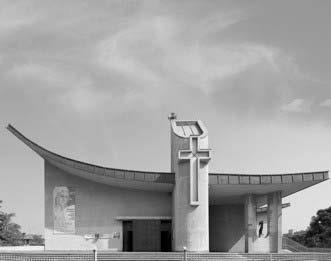
The City of Mazzo di Rho, Italy; the Church of Mary, Help of Christians – Maria Ausiliatrice
From 10 to 17 July 2005, the parish of the Holy Cross in Mazzo, a part of the city of Rho, which is west of Milan, together with the Italian branch of the Apostolate of Fatima, promoted an intense week of Marian spirituality, by hosting in the church dedicated to Mary, the Help of Christians, one of the Pilgrim Virgin Statues of the sanctuary of Fatima. From the very first morning, the constant coming and going of the faithful animated these days of prayer in honor of the Mother of Christ.
This is the context of the first apparition of Mary with the title “Bride of the Family”, as well as the first two messages she gave to Giulio Ancona - herbalist-naturopath from the city of Saronno and former Jehovah’s Witness - so that he would give them to the heads of the local church.
There have been 55 apparitions of the Blessed Virgin since 2005, without counting Giulio’s own innumerable experiences, but only those of immediate ecclesiastical relevance. There have also been two apparitions of Jesus and two apparitions of the Archangel Michael.
These apparitions have always been accompanied by a message, except the one on 14 October 2010 in the Chapel in the town of Mazzo, which was only followed by the sign of the “five luminous tears” shed by the Holy Virgin, from the upper part of the altar.
The messages have always been written down, except for the one addressed to the members of the Bride of Zion Association of the town of Valle Guidino, when a chapel in honor of Mary Bride of the Family was requested for a specific site in the town.
The local church has followed, right from the start, the development of events with the attention and prudence needed for an accurate spiritual and pastoral evaluation. In conformity with agreements made with officials of the Milanese Church, the messages have always been given first and confidentially to the representative of the Curia with the role of following the matter. Only at a later date, and with church official’s agreement, these messages were made public.
The same procedure was followed for the publication of the book entitled I Saw the Bride Descend. The Apparitions and the Messages of Mary Bride of the Family.
Since 2010, the Curia of Milan has no longer considered it necessary to view the messages before their presentation to the public.
In 2015, the Archbishop Angelo Scola put Father Franco Manzi in charge of an in-depth examination of the “Mazzo” affair. Father Manzi is a Milanese priest and a well-known biblical scholar, specializing in the field of Mariology. Father Manzi gave his work to Cardinal Scola and the Vicar General of Milan, Mons. Mario Delpini in January 2016. And in this very period – early June 2017 – Mons. Delpini has informed us of the setting up of a commission of ecclesiastical evaluation.
The messages in this collection are printed in chronological order. None of them are “interior locutions”, but they are messages received from a subject outside of Giulio.
They were communicated by means of language, which was not Italian or any other language known to Giulio, but a sort of “universal language” comprising in itself all languages and local dialects. They were expressed not just with words but also with sounds, colors, feelings, images and scents. Giulio understands this way of communicating only within the context of the apparitions, while it remains unknown to him outside of these instances.
When the Holy Virgin first appeared to Giulio, she wore the typical clothing of the Madonna of Fatima. It was, you could say, as if the statue came to life.
Starting from the fourth apparition, the one on 5 January 2006, Mary began to reveal herself in the dress of the Bride, as she is pictured in the painting by Dario Redaelli, housed in the Chapel of Mary, Help of Christians, in the town of Mazzo.
In these apparitions even the color of Mary’s complexion is very distinctive and, according to the explanation she herself gave to Giulio, it comprises the colors of all the peoples of the earth, and is therefore a complexion we could define as “universal”, just as the language she uses in these revelations is universal.
Some of these messages are addressed to specific ecclesiastic communities and associations: the Parish of Mazzo, the diocese of Novara, the Bride of Zion Association, the families of Arese engaged in volunteer work in the territories of the ex-Yugoslavia, etc. Others are for more general social or religious groups: the communities of the children of Abraham (Jews, Christians and Muslims), families, presbyters, prostitutes, homosexuals, etc., but, in any case, they are always messages of universal value.
Giulio Ancona is the eyewitness to these facts. He was born on 11 April 1952 to Gioacchino Ancona and Maria Lanzetta in the town of Campagna (Salerno), which is known for the Jews held prisoner there during World War II.
A concentration camp was set up in two former convents of the town: the Dominican one of Saint Bartholomew and the other one of the Followers of the Immaculate Conception. It was in operation from 16 June 1940 to 8 September 1943, and it was one of the main camps set up by the Fascist government for refugee Jews in the country when Italy entered the war.
Hundreds of foreign Jews were sent to Campagna, where, in what was perhaps a unique situation, they could fraternize with the local population and enjoy special treatment. At certain times they could move freely in the town and were welcomed in the houses. Some even married local Campagna girls.
A special library was set up with religious books in Hebrew, along with a newsletter for the prisoners and also a football team. A small synagogue was even set up in San Bartholomew. Among the prisoners there were professionals such as doctors, who gave their services free of charge to the other prisoners and the locals. This was prohibited by order of the Fascists, but the local administration of the city hid this situation from their superiors. In particular, two people made all this possible: the town’s bishop, Mons Giuseppe Maria Palatucci and his nephew Giovanni Palatucci. The latter was first in charge of the Foreigner Office and then he was the commissioner of the city of Fiume, where he did what he could so that the Jews who were arrested ended up in Campagna. He knew that his uncle, the bishop, would take care of them. In this way, he managed to block the deportation and death of around 5,000 Jews between 1940 and 1943.
After 8 September 1943, while the Germans were taking the prisoners from the various concentration camps to transport them to death camps, the Jews of Campagna were allowed to escape into the mountains and thus save themselves. When the Germans discovered this, they deported Giovanni Palatucci to Dachau, where he died on 10 February 1945. Because of all this, the City of Campagna was awarded the Gold Metal of Civic Merit by the Presidency of the Italian Republic, and Yad Vashem, the World Holocaust Remembrance Center in Jerusalem, has promoted an initiative to honor the City of Campagna with the title, “City of the Righteous”.
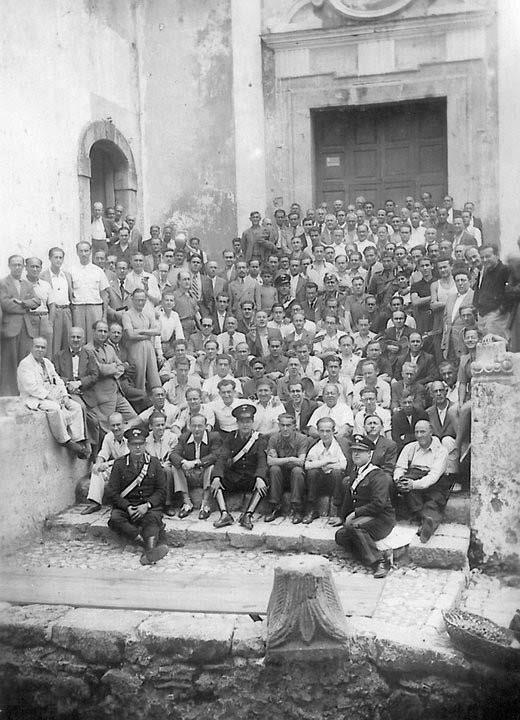
Jewish prisoners in Campagna with some Carabinieri on the steps of the Convent of Saint Bartholomew
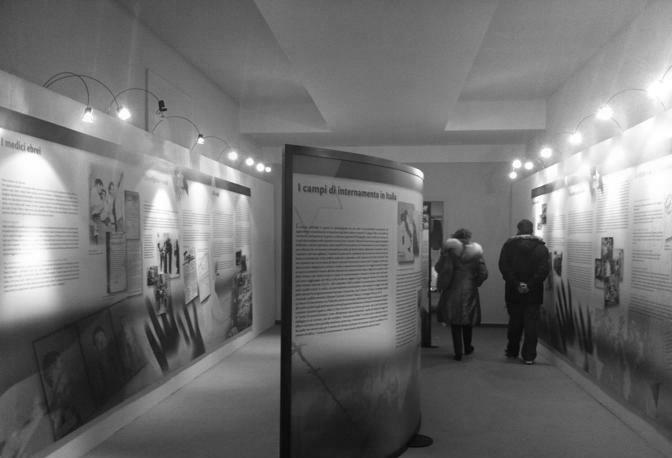
The Remembrance Museum in Campagna
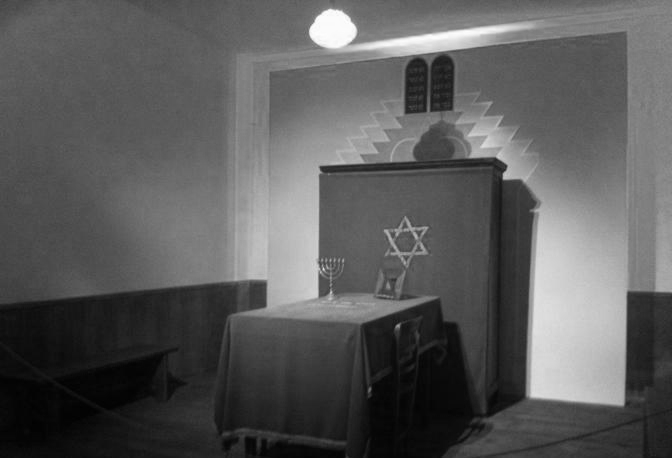
A reconstruction of the synagogue of the concentration camp of Campagna
The historical buildings of Saint Bartholomew have been the location of the Remembrance Museum of Campagna for several years now. It brings to life that historical period with videos, photographs and reconstructions of everyday settings, such as the prisoners’ synagogue.
This brief history of the saving of the Jews of Campagna is very meaningful if we compare it to the revelations received by Giulio, who is from Campagna, on the importance of consecrating the lands of the children of Abraham in order to avoid another worldwide holocaust. It is probably no accident that the request to consecrate the Middle East was made first to a German pope.
Returning to Giulio’s beginnings, it should be noted that because of the precarious conditions of that period, the Ancona family lived in a house made available by Father Emilio Cubicciotti, the priest of Campagna in those years.
The fourth of Gioacchino and Maria’s six children, Giulio, a lively child, always got himself into trouble, from which his brother Leonardo saved him. From an early age he was attracted to religion, even though he grew up in a family who were not practicing Catholics. He often made little altars at home, lit candles, brought flowers to church, visited the elderly and helped the needy.
But his own supernatural experiences were the most important events of his early years: he often woke up in the night all tied up in his sheets braided in lots of tiny knots. He had visions of the dead (such as his maternal grandmother who had died before he was born), angels, demons, Jesus and Mary. He knew personally many of the important figures of the Christian faith, who he heard about in church, and he was convinced that everybody saw them just as he did. When he was six or seven years old he realized that this was not exactly so.
These continual manifestations of the supernatural world created incomprehension and all sorts of problems, starting with his own family. This situation confused and disturbed him greatly. He talked about it with Father Emilio Cubicciotti, who advised him to not talk about these things with anybody and to learn to keep these experiences to himself. Giulio followed this advice to the letter until he was an adult.
This is how he describes the role of the three Archangels, Michael, Gabriel and Raphael, in that period of his life: “The angels taught me the meaning of the Holy Scriptures, the value of life and other things such as the value of suffering, the importance of never losing a sense of one’s own dignity, the ability to appreciate the value of everything that happens, whether it is good or bad, and, most importantly, to appreciate the value of the dignity of others. My family was extremely poor, but the angels suggested that this situation, in and of itself awful, in truth represented a great spiritual opportunity: to be poor like Jesus, without falling prey to sadness, by offering up to God your suffering and by dedicating oneself to helping your fellows even more intensely”.
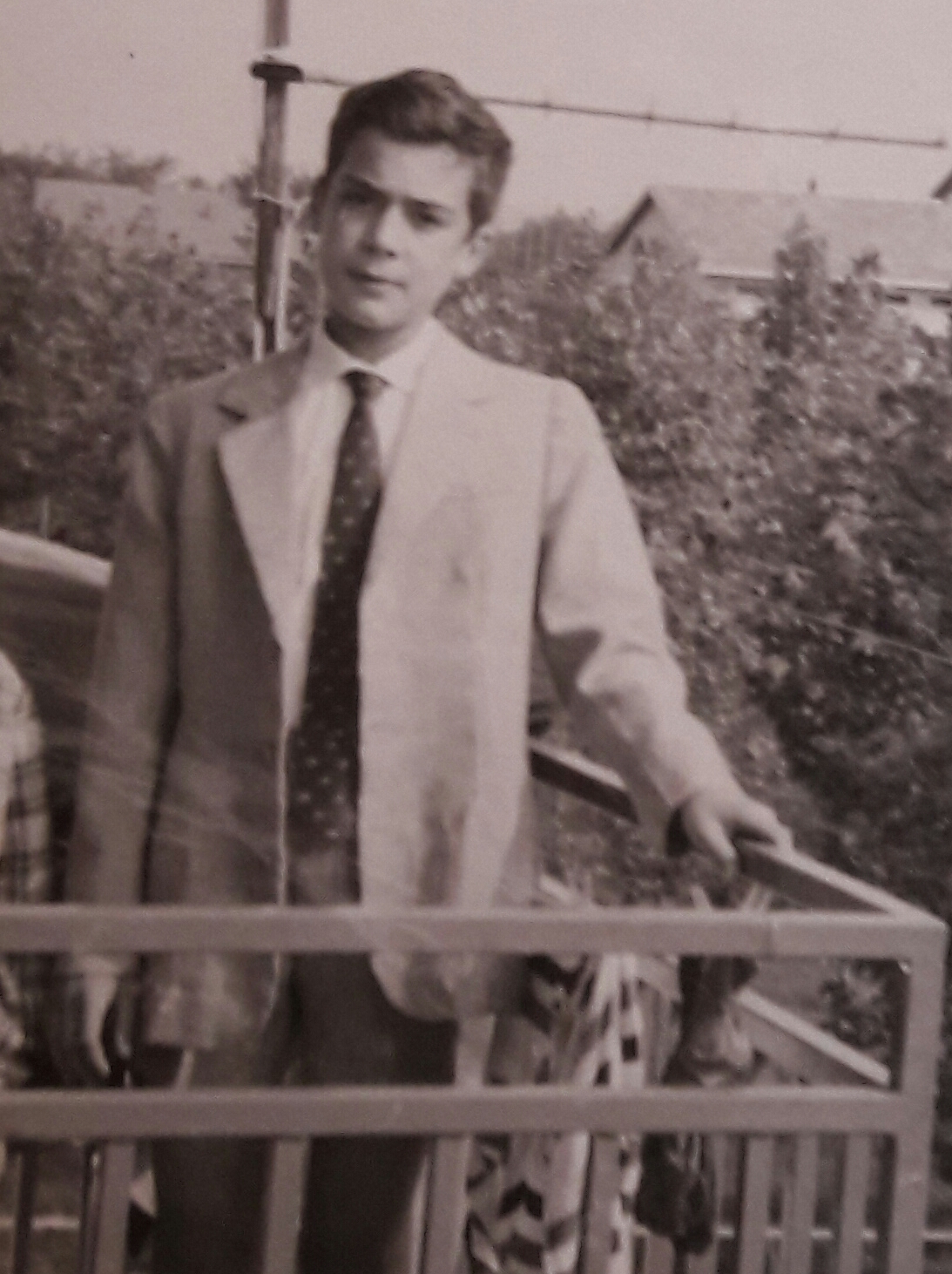
Giulio at 12 years old in the town of Meda
At around 9 years old, Giulio moved with his family to the town of Lissone in the province of Milan, where his father Gioacchino, with his son Leonardo, had found work and a house. After a few years, the family moved to the town of Meda. Giulio was about 12 and his spiritual experiences continued as always, but he continued to keep them to himself.
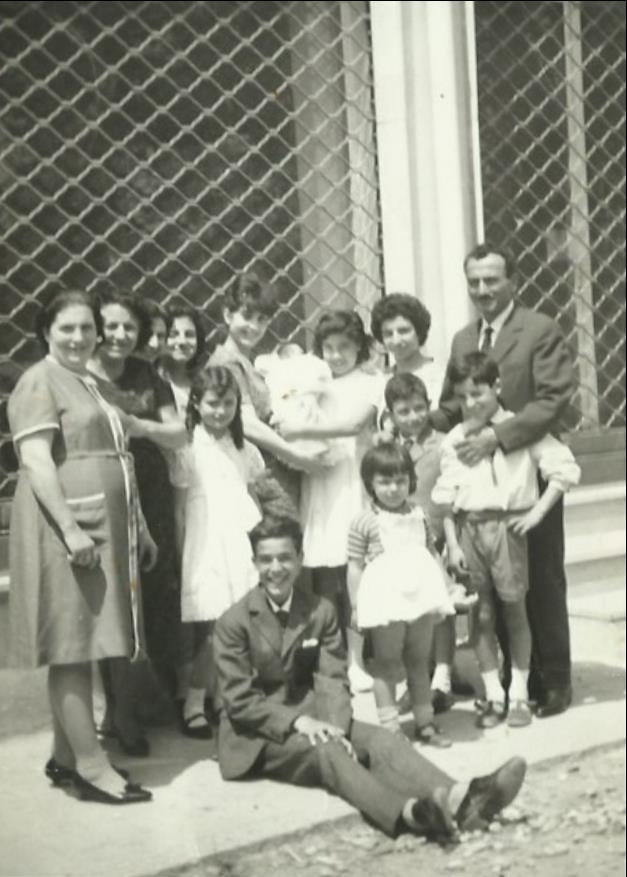
Giulio on the day of his First Communion
His desire for a religious life grew and he even considered entering the priesthood, and so he went to stay with the brothers of the Seminary of Saint Anthony of Padua in the town of Rivoltella del Garda. He stayed there for three months during the summer vacations for a period of vocational discernment.
Giulio’s parents did not agree with his plans to become a priest, and so they had him return to Meda to take up his usual school and work activities.
At this time, his family moved from the outskirts to the center of Meda. This allowed Giulio to go often to the Church of the Nativity of the Blessed Virgin Mary and the parish youth club. He also began helping out the elderly at the Retirement Home of Meda.
Later, unbeknownst to his parents, he joined for about two years the Milites Christi Association founded by Giuseppe Lazzati; but, when they found out, they had him give this up too.
When he was around 19 years old, he decided to join the Congregation of Jehovah’s Witnesses of Seregno - the first non-Catholic group he came upon - hoping to interrupt the continual supernatural manifestations. He was baptized by the Jehovah’s Witnesses in the town of Sesto San Giovanni in 1971.
When he was twenty he became a conscientious objector to military service. First, he was sent to the barracks of Fano, and then to the one in Falconara Marittima. Here, they made several attempts to make him change his mind, and then they put him in solitary confinement for ten days. This was the same period when a violent earthquake struck the region of Le Marche, with its epicenter in Ancona. The personnel of the barracks were so involved in organizing help for the victims of the earthquake that they forgot all about Giulio shut up in solitary confinement!
He was then transferred for six months to the Military Prison of Forte Boccea in Rome, and then he was tried in the Military Tribunal of the Navy in La Spezia. After this he was called up again and underwent a medical examination at the Military Hospital of Baggio, where, thanks to the intervention of a Jewish doctor, he was definitively discharged.
At this point since his father did not understand and no longer tolerated Giulio’s behavior and religious choices, he forced him to leave home. On 25 April 1974, he left for Sardinia where he stayed for about a year in a shack in the countryside of Sinnai city, getting by with odd jobs and help from the locals.
Giulio then moved to Macomer where he shared a house with another Jehovah’s Witness; he paid the rent with the monthly remuneration he received as evangelizer. During a meeting of the Jehovah’s Witnesses, he met Teresa, a young member, who he married a few months later in Carbonia.
As a member of the Jehovah’s Witnesses, Giulio enjoyed a lot of freedom to act as he saw fit because he was mostly sent to faraway and difficult places because he was a gifted evangelizer. This way he didn’t have to account for his actions to anyone, he was free to develop his main interests, the ones taught to him by the three Archangels: the deep meaning of life, the value and significance of suffering, and love for God and one’s fellow human beings, especially for the needy, as a sign and basis for every truly spiritual path.
After eight years as a missionary in Sardinia, he and Teresa moved to Liguria, then to Le Marche and finally to Emilia Romagna, where, besides his missionary work, he studied to become an herbalist. In 1988, he settled in the town of Lentate sul Seveso. In this period he began the study of Herbalist Sciences and Naturopathy in Lugano. During the years he became increasingly dissatisfied with the lifestyle and doctrines of the Jehovah’s Witnesses and he finally left the Jehovah’s Witnesses in the spring of 1991, when he had already been seriously desiring a complete return to the Catholic Church.
After taking this step, the supernatural manifestations immediately returned, especially the apparitions of the three Archangels, which had almost completely ceased during his 20 years with the Jehovah’s Witnesses.
In one of these apparitions, in April of 1992, he was told of the future birth of a daughter after many years of useless attempts, as a gift for his return to the Catholic Church. In April of 1993, Teresa became pregnant, and in January of 1994 Valentina was born, exactly when the three angels had said. After that, Giulio gradually started again to participate in the life of the Catholic Church, even though he still refused any outward devotion to the Blessed Virgin, which he still considered a deviant religious practice inspired by the devil.
In the meantime, the three angels prepared him for future events by urging him to be ready for the mission that God was about to entrust to him for the good of the Church and humanity, but without explaining what it was.
He waited for around ten years, working as a herbalist-naturopath in the city of Saronno, but he still dedicated his time to those suffering in body and spirit. Finally, in January 2005, he met Angelo Ansalone, and he recognized this encounter, which had been announced by the angels, as the signal that the time was ripe to begin the mission entrusted to him by God, and he began to lay the groundwork for an association based on these specific five points:
- Love for God ;
- Love for one’s fellow human beings;
- Love for the Church;
- Love for the Holy Scriptures;
- The role and works of the Holy Spirit.
The document which develops these five points was given to the then- provost of the city of Rho, Father Gian Paolo Citterio, and it was dated 21 April 2005, three months before the start of the apparitions of Mary in Mazzo di Rho.
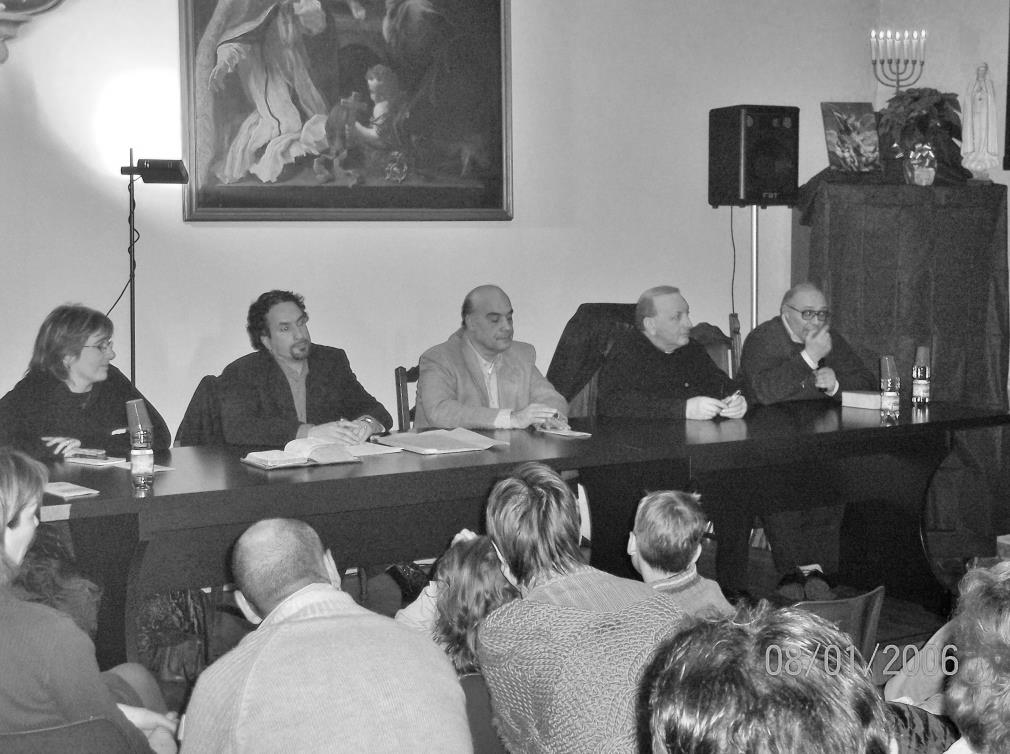
The City of Rho, Magnaghi House: 8 January 2006 – Inauguration of the Bride of Zion Association
The Bride of Sion Association was publically inaugurated on 8 January 2006 in Rho at the Magnaghi House; it was initially called the Petra Association. On this occasion, the text of the association’s Rule of Life was also presented, which establishes, for those who so desire, the chance to follow a path of consecration to God by means of seven Vows.
Vow of Service: this shows the determination to dedicate yourself to the service of your fellows, and, in particular, those who are neediest, and not just materially, but, above all, morally and spiritually.
During the first 11 years, particular attention was paid to those who were sick in body and in spirit (among the latter we would like to recall the spiritual help and accompaniment offered to victims of evil), to women who work as prostitutes, to those who suffer because of their homosexuality, to spiritual support for married couples and families in difficulty, to those who are separated, to the divorced who have remarried, to priests and consecrated persons in crisis and to young people searching for meaning and values on which they can base their lives.
Vow of Truth: this vow expresses the firm desire to love and serve the truth by banishing double-talk, intrigues, fictions, lies, backbiting, slander and criticizing behind people’s backs. This is the vow the meets the greatest difficulty and resistance.
Vow of Non-violence: the vow expresses the determination to not afflict any human being, and, if possible, no living creature; and the determination to fight against every form of oppression and violence, in all their forms and ways, starting with the spirit of superiority, arrogance, possession and domination which often abides in our hearts, in our families and in our communities.
Vow of Chastity: this vow shows the great value we give to this essential part of human life, which is essential for a clear and joyful existence. It is often confused with the Vow of consecrated celibacy of priests and monks, while it is actually a commitment that concerns every Christian and means purity of action and thought (Mt 5.27-28), as a way to learn how to truly love.
It is based on the sacredness of human beings created in God’s image, and is invaluable for every age and stage of life, including marriage.
Vow of Obedience: this means the firm desire to submit your life to God and his Revelation, as it is transmitted to us by the Church, in communion with the Pope’s magisterium, as the shepherd of the Universal Church, and with that of the bishops, as the successors of the apostles, to whom has been entrusted the care of every local Church.
Secondly, it means the will to obey the directives/guidelines of the leaders of the association – those indicated by the Holy Virgin, to guide this movement.
Vow of Sobriety in Life: this vow expresses the commitment to live simply and soberly because you are aware that accumulating wealth and living in luxury while millions of human beings suffer from extreme poverty is a serious sin against God and humanity according to the teachings of the Revelation, the Church Fathers and the social Doctrine of the Church.
Vow of Witnessing: this expresses the will to give witness, with the strength of the Holy Spirit, to one’s Christian faith with simplicity, joy, firmness and love. Indeed, one of the tasks that the Blessed Virgin has entrusted to members of the association is to promote among the children of the Jewish people and the Muslim faith a deeper knowledge of the works of Jesus Christ and his Mother Mary, starting from the spiritual heritage we have in common as children of Abraham, without, though, any anachronistic proselytism, presumption or inferiority complexes.
These Vows last one year and are usually renewed on 2 February each year on the World Day for Consecrated Life.
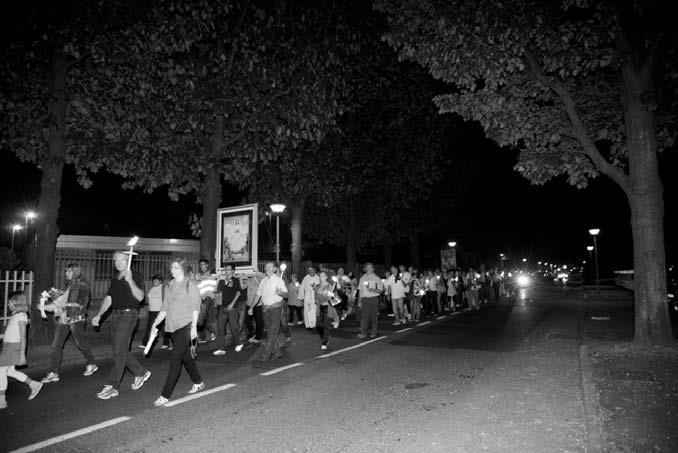
Rho: annual procession of 2 October "Walking with Mary"
Prayer for Consecration with the seven Vows
Holy God, Strong and Immortal, Just and Merciful,
since You granted me the grace to serve your Kingdom
in the Bride of Sion Association, by observing its Rule,
help me to never forget my promises,
and by the grace of the Holy Spirit,
the support of the Virgin Mary and Saint Michael the Archangel,
allow me to move forward in the direction indicated by the Seven Vows:
Service, Truth, Non-violence, Chastity,
Obedience, Sobriety of life and Bearing Witness.
Through Christ our Lord.
Amen .
Currently, there are around forty consecrated through the Seven Vow, and the second day of each month continues to be a cornerstone of the association’s activities - a day for community and missionary work, promoted as:
“A day of evangelism and prayer to support the Pope’s universal ministry, for the unity and renewal of the Church in the spirt of Vatican Council II and for the promotion of interfaith dialogue”.
Because of the large turnout of people sick in body and spirit, couples in difficulty, desperate parents, young people in crisis, young woman who prostitute themselves and so on, probably these days resemble what Pope Francis meant with the famous image of the “field hospital” Church.
With regard to events for interfaith dialogue and peace in the Middle East, something very interesting occurred during Giulio’s visit to the Church of the Holy Archangels in the Armenian quarter of Jerusalem, in November 2010. He received a clarifying message on the meaning of the strong presence of the three Archangels in the Holy Land: this is God’s desire because of the serious risk to world peace connected with this region. They are acting so that no irreparable harm will happen: the extension of the climate of tension and violence in the Middle East to the rest of the world, with the risk of a new world war.
They were put in charge of the three firstborn religious communities of Abraham in order to guide them towards the fulfilment of God’s plan of salvation:
- Gabriel as head of Christianity, which needs to wake up from the lethargy of its spiritual sleep, and rediscover the force of Christ’s Gospel;
- Michael as head of Islam to promote the path of liberation and peace;
- Raphael as head of the children of Israel to help them along a path of spiritual healing from the wounds and traumas of history, often inflicted by the children of the Church in the name of Jesus Christ.
During the first decade of the association several events have been fundamental, and their echo can be heard in the various messages received and then gathered in this book. In particular three topics should be highlighted.
- Support for the “peace plan for the Middle East” promoted by Mary. The various initiatives we carried out at the Latin Patriarchate of Jerusalem have made possible some important steps forward, such as the Act of Consecration of the Children of Abraham and the Middle Eastern Lands and Nations, celebrated in the Basilica of Gethsemane on Sunday 3 April 2016, and the Week of Prayer, Fasting and Initiatives for Peace in the Middle East of July 2016.
Currently, this “peace plan” includes, for summer 2017, a spiritual journey of forty days promoted internationally. - The development of the “prophetic dimension” in the journey of the Bride of Sion Association. This is a point which, together with the development of the contemplative dimension, Mary has always indicated as one of the key elements for the future of the association. We do not know how this will happen, but ever since the pilgrimage on Mount Carmel in May 2015, Mary has asked for the promotion of a “school of prophets” based on the study of the prophetic experience in the Bible and on its practical experimentation within the association’s journey.
This experience on Mount Carmel was preceded by the community celebration of the “spiritual wedding” at Cana of Galilee among the members of the Bride of Sion Association and the Lord Jesus. This ritual was inspired by the nuptial symbolism of the Alliance, which is frequent in the prophetic language of both the New and Old Testaments. It is certainly no coincidence that, in the fourth Gospel, the first sign with which Jesus “reveals his glory” was the water turned into wine during the wedding party, which Mary also attended. In the Jewish tradition, wine is the symbol of the messianic age, and so according to the view of John the Evangelist, the wedding at Cana becomes a symbol of the messianic wedding between the Messiah-Groom, represented by Jesus and the “Community-Bride of the Lord”, represented by Mary. As the French exegete J.P. Charlier says, “With their gestures and dialogue, the Virgin and Christ, by going well beyond the human and material plane of the local festivities, replace the young bride and groom of Cana to become the spiritual Bride and Groom of the messianic banquet.” The entire biblical Revelation concludes with chapter 22 of the Book of Revelation with the image of the Spirit and the Bride that say “Come!” to the Messiah-Groom who proceeds triumphantly against those powers hostile to God’s plan. With the prophetic symbolism of the spiritual wedding in Cana of Galilee between the association and Jesus, Mary wished to show the importance of the highly symbolic aspects of this event for the journey of the entire Church. - The missionary activities abroad have as their goal the spreading through the five continents of the “good news” of the apparitions and revelations of Mary, Bride of the Family. Among these activities, we would like to recall the trips to Lebanon and Israel, the four missionary journeys to Scotland (one of which was actually a honeymoon!), including meetings with laypersons, monks, pastors and reverends of the various Scottish churches, trips to Germany, into the heart of the Lutheran reform, and missionary activities in Poland, Slovenia and Croatia.
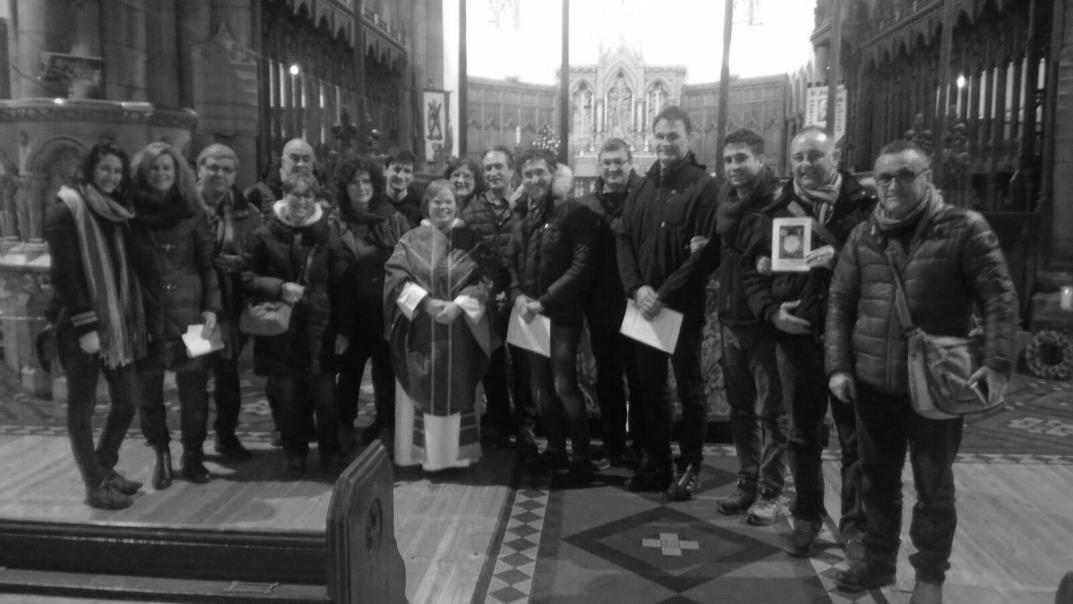
Saint Andrew’s Anglican Church in Inverness, Scotland – A moment of prayer with Reverend Sara
The importance the Blessed Virgin gives to efforts to bring unity to the shameful division of Christians and their Church emerged in all these journeys.
The experiences of the “missionary families” were very meaningful, in Spain and in Portugal, where we also contacted the rector of the Sanctuary of Fatima; and the same was true for Giulio and Davide’s meeting with Archbishop of Athens, Rossolatos Sevastianos.
During our missionary journeys we try to meet representatives of the various local churches to inform them about what has been happening since July 2005 in the diocese of Milan and in the Middle East.
Then, we recite together with them the Act of Consecration of the Children of Abraham and Middle Eastern Countries, which was celebrated on Sunday 3 April 2016 in Jerusalem in the Basilica of the Agony, next to the garden of Gethsemane. These prayers constitute many “spiritual seeds” of unity and peace spread throughout the world while waiting for the Consecration, which the Holy Father will do in Jerusalem, to activate them into one single worldwide spiritual event. According to the striking image used by Mary, these seeds should set off a kind of “worldwide explosion of the Holy Spirit”. In fact, the spreading of these spiritual seeds in various nations is a way to carry out the task God has entrusted to us in this period.
Not everyone agrees and some people ask why we are squandering so much energy, time and money. The answer is very simple: these revelations of Mary, the Bride of the Family, are not the private property of the Bride of Sion Association; they belong rightfully to the universal Church, which, through them, may gather new light and spiritual strength to face the great challenges of this period.
MESSAGES AFTER 24 JANUARY 2010
With regard to the essential contents that had to be transmitted to Church and mankind, the revelations of Mary, Bride of the Family, found their fulfilment in the apparition on 24 January 2010 in the Church of the Holy Sepulcher in Jerusalem. However, even after this event, the Blessed Virgin has continued to appear both in Giulio’s personal experiences and in special moments of the community. Among these should be numbered the missionary journeys and the prayer vigils promoted by the Bride of Zion Association in various nations and parish communities.
Giulio noted that the apparitions which have been taking place since January 2010 have less “spiritual intensity” than those occurred before. This is not because the apparition or its contents are less clear, but, if this can be said, because of the “attenuated glorious intensity of the event”.
As a consequence, the physical, spiritual and emotional impact on him is now not as strong as it was during past experiences.
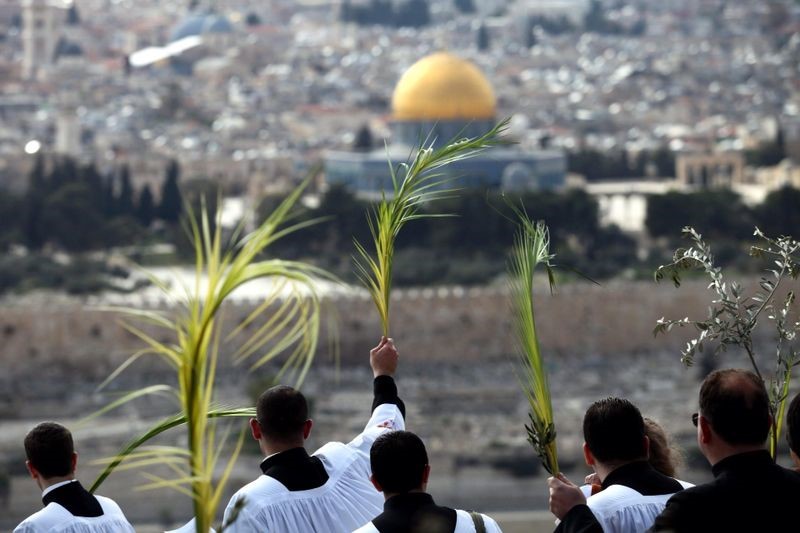
The Palm Procession in Jerusalem



